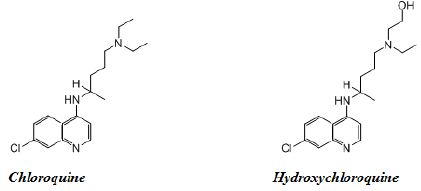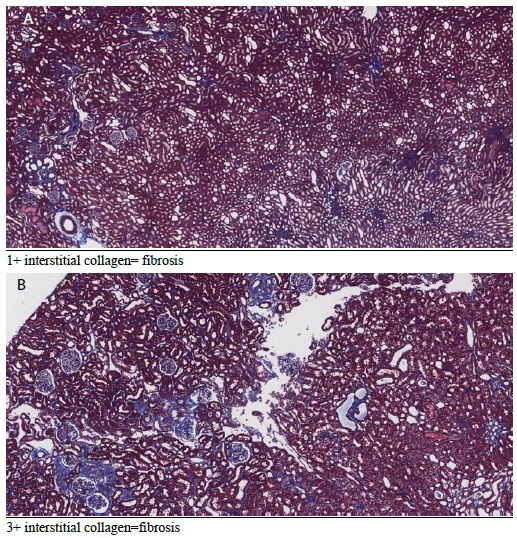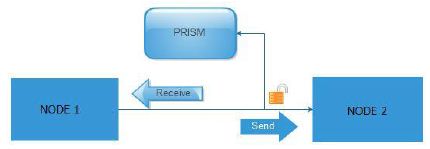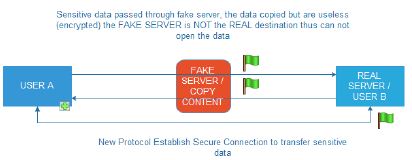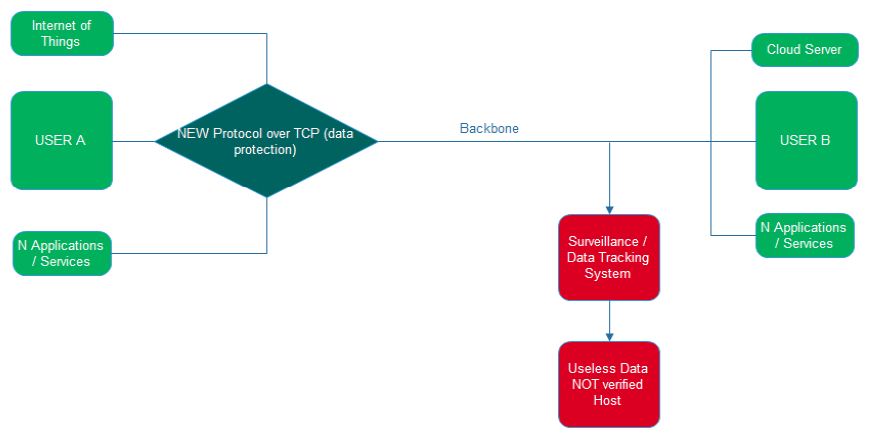The National Institute of Mental Health (2018) defines depression as a “serious mood disorder that causes severe symptoms that affect how individuals feel, think, and handle daily activities, such as eating, sleeping, working (p.1).” Many signs and symptoms accompany depression, such as persistent sad and anxious behavior, irritability, feelings of worthlessness or hopelessness, decreased energy and fatigue, feeling restless or inability to sit still, and difficulty sleeping, to name a few [1]. Depression costs about 210 billion dollars a year in America [2]. Perimenopausal women are at an increased risk for depression due to various factors such as menopause itself, obesity, heart disease, and diabetes. That leads to the initial question surrounding this project: among perimenopausal women, is hormone therapy is effective in treating depression than antidepressant medications. Obtaining information about hormone therapy treatment in conjunction with the CES-D depression screening tool will allow providers to appropriately treat and assess perimenopausal women for depression [2].
Perimenopause
Perimenopause is defined as the final years of a woman’s reproductive life and begins at the first onset of menstrual irregularity and ends after one year of amenorrhea with an age range is approximately 44-54 years old [3,4]. There are two stages of perimenopause: early and late transition. Early transition women typically experience hot flashes, poor sleep, depression, and increased anxiety [3]. One-third of perimenopausal women exhibit different depression side effects during the transition periods of perimenopause that can lead to depression, such as hot flashes, sleep changes, vaginal dryness, and adverse moods; these symptoms worsen in the late stages in perimenopause and will not subside without treatment [3]. A decrease in serotonin does not cause perimenopausal depression; low estradiol is the contributing factor [4]. The lack of estrogen contributes to degeneration of ovarian function, sweating, insomnia, palpitations, mood swings, fatigue, headache, anxiety, and depression [4]. Therefore, hormone therapy is the treatment of choice for perimenopausal women [4].
Depression Management and Screening
Standard of Care
The current standard of care for individuals between 12 and 65 is screening and treatment with the PHQ-9 depression scale and medication selective serotonin reuptake inhibitor (SSRI) [1]. The criteria for depression diagnosis and treatment is as follows: 1) depression symptoms must be present for most of the day or nearly every day for at least two weeks; 2) depression screening will be conducted with the Patient Health Questionnaire-9, (PHQ-9); 3) determine patients score of depression with a scoring range of zero to three per item, a score ≥10 indicates depression; 4) treatment with an SSRI medication; 5) follow up in four weeks [1,5]. SSRI signs and symptoms include sleep disturbances, gastrointestinal upset, concentration problems, and a range of moods throughout the tapering process [1]. It is frowned upon to stop these medications due to withdrawal symptoms, and the patient must be followed closely by a health care provider [1]. Treatment of depression should be individualized and tailored specifically to the patient, or remedy will not be effective.
Hormone Replacement Therapy
Hormone replacement therapy in perimenopausal women is more effective than SSRI medications because these women have degeneration of ovarian function and reduced estrogen levels [4]. Hormone therapy addresses low estrogen levels that cause depression [6]. Symptoms of low estrogen levels are poor mood, impaired sleep, and poor response to stress [6]. Hormone replacement therapy comes in different forms, such as Transdermal Estradiol, Raloxifene, and Tibolone [7,8]. Transdermal Estradiol, Raloxifene, and Tibolone share the side effects of an increased risk of endometrial cancer, heart attack, stroke, and blood clots [9]. Due to these adverse side effects, a thorough past medical history and frequent follow-up are necessary for women before treatment is started. Depending on the obtained brand, the Transdermal Estradiol Patch can be applied once or twice a week [9]. The patch is worn daily for a month, or it can be rotated on a schedule for three weeks with one week off [9]. It is recommended to obtain serum estradiol levels and appropriately screen with a reliable depression screening tool before treatment. Gordon [6]. CES-D. The Center for Epidemiologic Studies Depression Scale, CES-D, is a 20-question questionnaire rating each question on a scale of one to four; a score >16 is considered at risk for depression [10]. Many studies show that the CES-D scale is more effective in diagnosing perimenopausal depression [6,8,11]. In addition, the CES-D scale considers the interpersonal factor, which resonates positively with patients, and patients feel as though they are being assessed more efficiently [5].
Barriers to Depression Treatment
One barrier to depression treatment for perimenopausal women is human error. Estradiol patches (n=6) contributed to four out of 46 reports of human error application (ISMP, 2021). Human errors come from applying and removing old and new patches (ISMP, 2021). Patients lack awareness of the patch on the skin, causing dosage errors and incomplete treatment (ISMP, 2021). Within the Odyssey House, to prevent human errors, a daily check of the removal and the application of the Estradiol patch will need to be conducted at morning and night medication pass and charted in Kareo. Another barrier to the treatment of depression with hormone therapy is changing the mindset of healthcare providers from the standard of care, SSRI medication, to the Estradiol Transdermal patch. This barrier decreases the ability to implement new ways of thinking and reduces new forms of treatment coming into practice. To break this barrier, proper education and statistical data of success will need to be provided to allow this study to be successful [12].
Theories in Practice
Due to healthcare constantly changing due to advancements in medicine and technology, new treatments and education are available to help healthcare providers treat and diagnose their patients. It can be daunting to adopt new knowledge, implement a new treatment, or even implement a new diagnostic tool into practice. However, adapting to new methods of diagnosing and treating patients is a practice that health care providers need to be implementing to provide more effective outcomes for their patients. Two main theories can help with education implementation: Carper’s Knowing and Behavioral Theory. These two theories will help shape how healthcare providers think and change their practices.
Carpers Way of Knowing
Carper’s Way of Knowing is a theory introduced by Barbra Carper in 1978 [13]. Four different types of knowledge are highlighted in this theory: empirical, aesthetic, ethical, and self-knowledge [13]. These four ways of knowing were initially presented as nursing education but can be used to provide a well-rounded way to shape and condition healthcare practice [13]. Each different section of knowing acts as a guide for healthcare providers to modify and grow their practice. Empirical knowing is a way to incorporate reading, listening, observations, and research into practice [13]. Aesthetic knowing includes interpreting input into one’s mind, exploring a healthcare provider’s current practices with patients, sharing with colleagues, and implementing and interpreting previous actions with other cultures and patients [13]. Ethical knowing is implementing ethical situations into practice and analyzing what they can offer patients and future patients [13]. Lastly, self-knowledge takes in the personal experiences of values, spirituality, and accepting uncertainty [13]. These four ways of knowing shaped how Carper introduced learning to the nursing community [13].
Behavioral Theory
John B. Watson brought about Behavioral Theory in 1913, which implies that all behaviors are acquired by conditioning an individual [14]. When individuals learn something new, this theory proposes that an individual can learn and change behavior with the proper conditioning [14]. Watson’s theory suggests two types of Conditioning: Classical and Operant [15]. Classical Conditioning is when a stimulus allows an individual to produce a behavior or trigger an action such as an addiction to alcohol; just the smell can bring back feelings and desire to drink once more [15]. This theory can be related to Ivan Pavlov and using a bell to stimulate the dog’s reactions [15]. Operant Conditioning links consequence and behavior [14]. The effects can be positive or negative, with the right action producing a positive reinforcement and a lousy behavior having a negative result [14]. Operant conditioning links B. F. Skinner and his rats. These theories can be applied when individuals learn something new and implement it into their everyday practice. Behavioral Theory implementation tries to change the way of thinking of an individual or group. Unfortunately, healthcare providers tend to be reluctant when changing their practices unless given positive reinforcement for the change. Positive reinforcement in healthcare is happy patients, proper treatment, or immediate quality care provided in their approach [14]. Therefore, utilizing behavior theory to capitalize on this positive feedback is paramount to helping smooth introducing any new practices or methods to the healthcare field [14,15].
Framework
Proper presentation and rational thinking are two ways healthcare providers can be educated to change their behaviors [12]. When submitting a new type of education in a healthcare setting, it is imperative to present knowledge so that the audience receiving the information will enjoy and relate to it [12]. If the audience does not like the presentation or connect, they can reject the information and not continue practice implementation [12]. Carpers’ way of knowing adds a different framework for this project. Aesthetic and Empirical knowing will be implemented in this project when a healthcare provider assesses, listens, observes, and completes research [13]. Implementing these two ways of knowing will allow for significant progress in healthcare providers’ treatment and diagnosis approaches. Behavior Theory allows physicians to see results that have been applied to other practices and begins the operant conditioning of using a complementary treatment to produce a positive outcome [14]. Implementing a new diagnostic tool and treatment options can be intimidating and time-consuming. However, providing better treatments to patients and updated screening tools for depression will help implement positive reinforcement to change patient outcomes. Using the Carpers Way of Knowing and Behavior Theory will allow healthcare providers to see positive results caused by positive reinforcement before their implementation. Education provided will catch the healthcare providers’ attention and make them feel as though they will be successful in their practice. Good examples of appropriate knowledge will allow healthcare providers to change their thought processes and then change their medical practice. However, change can take time, and provider buy-in is essential [12].
Contributions to Practice
Not all diagnoses of depression need medications to subside its side effects. Being treated for depression appropriately can change a patient’s life [4]. Depression is a very complex disease, and diagnosis that may require different treatments because patients respond to treatment differently [4]. Implementing new therapies and a new screening tool will allow perimenopausal women to be diagnosed and treated for depression appropriately.
Advanced Nursing Practice
Providing care as an advanced practice nurse requires ongoing education and adaptation. Healthcare providers must be willing to grow and adapt to the changing literature and treatment guidelines based on current evidence in the literature. Operant Conditioning of learning allows an advanced practice nurse to see the negative and positive effects of implementing new and current diagnoses and screening [14]. The education received must be appropriate and delivered correctly for the advanced practice nurse to see the positive outcome in implementation [14]. Incorporating Carper’s Way of Knowing, specifically empirical and aesthetic knowing, allows an advanced practice nurse to listen, observe, reflect, and implement new strategies [13]. Incorporating this practice enables the advanced practice nurse to remember how they take care of patients and understand the importance of continuing education. This way of thinking promotes professional growth as well as improved evidence- based care.
Literature Search
PubMed and Cumulative Index to Nursing and Allied Health Literature (CINAHL) were the databases used to complete this literature search. The following keywords were used: perimenopausal depression, perimenopausal women, depression screening tools, PHQ-9, CES-D, perimenopausal depression hormone treatment, CES-D perimenopausal women treatment, perimenopausal midlife depression education, depression education, depression medications, chronic disease, depression non-pharmacological treatments, midlife women depression, and depression statistics. The initial search yielded 35 studies. Twenty-nine articles were rejected because they did not use a depression screening tool, did not focus on perimenopausal women, did not incorporate hormone therapy compared to SSRI, and did not use any of the following scales CES, PHQ-9, or MENO-D. The remaining six studies were retained for the literature review. The studies discussed in this review are four randomized clinical trials [6- 8,11] and two cross-sectional surveys [16,17]. These studies support hormonal therapy as the recommended treatment for depression in perimenopausal women. Additionally, these studies provide evidence that supports the use of the CES-D depression screening tool for perimenopausal women.
Research Definitions
- CES-D. A 20-question depression questionnaire rating each question on a scale of one to four, a score >16 is considered at risk for depression [10].
- PHQ-9. A nine-question depression questionnaire with a zero to three scoring A score of > to 10 indicated depression [5].
- MENO-D. A depression questionnaire using twelve symptoms divided into five categories with scores from zero to four. A score of ≥ to 20 indicates an individual to be at risk for depression [7]. The five categories are Self (paranoid thinking, self-esteem, isolation, anxiety), Sexual (Sexual Interest and Low Energy), Somatic (Somatic Symptoms and Weight), Cognitive (Memory and Concentration), and Sleep (Irritability and Sleep Disturbances) [7].
- Selective Serotonin Reuptake Inhibitor. This medication promotes the reuptake of serotonin more effectively in the brain, alleviating the symptoms of depression (NHS, 2021) [18].
- Time in a women’s life preceding menopause (cessation of menses for at least 12 months), typically occurring during the fourth decade of life, lasting four or five years [7].
- Depression in Perimenopausal Symptoms may include muscle pain, weight gain, low energy levels, decreased self-esteem, feelings of isolation, cognitive fogginess, and low sex drive [7].
Screening Tools for Depression
Available depression screening tools include the PHQ-9, MENO-D, and CES-D. Ps [16] conducted a cross-sectional study using the cluster sampling technique with 594 women between 40 and 60 years of age for depression using the PHQ-9. This study took place in rural Kerala, at the Govt. T.D. Medical College [16]. The results of this study were that depression prevalence was 26.09% in perimenopausal women with a PHQ-9 cut-off score of ≥ 10 [16]. This study failed to provide inter-rater reliability to determine the effectiveness of the PHQ-9 in this rural setting [16]. Using the MENO-D scale, [7] conducted a randomized control trial with 82 perimenopausal women ages 43 and 54. In addition, women were divided into focus groups due to their symptoms of depression [7]. The MENO-D scale yielded a high-internal consistency of a cut-off point of p=0.70 [17]. However, like Ps [16], interrater reliability of the MENO-D depression scale was not provided. Additionally, the MENO-D was time-consuming, and patients grew tired during the survey and could not effectively be screened for depression [7]. Shae [17] conducted a cross-sectional study that divided 13,216 women ages 45 to 64 into three groups based on their socio- economic status, educational background, and if they were nulliparous. This study used a placebo, hormone replacement treatment, and an SSRI medication [17]. The prevalence of depression was found to be 18.4%. An initial study showed that hormone replacement therapy was effectively managed using the CES-D depression screening tool. However, with further research, Shae et al. 2020, using the CES-D scale, showed that participants had 1.45 (1.07-1.97) and 1.21 (1.02- 1.44) greater odds of having depression. Unfortunately, further data is unavailable as the study is still being conducted [6, 17] conducted a double-blind, placebo-control randomized trial at the University of North Carolina with 172 perimenopausal women from October 2010 through February 2016, with a mean age of 51 years. This study was conducted over 12 months, and the women were screened at months one, two, four, six, eight, ten, and twelve [6]. The CES-D scale was used to obtain depression scores. Interrater reliability was calculated to be statistically significant, p < 0.05 [6]. Cronbach’s alpha was not given in the study [6]. Using the CES-D, the intervention group treated with transdermal estradiol was found to have 15% higher depression scores than the control group, p=0.03. Participants that scored a score of 16 or higher upon initial assessment were a mean of 22.0 (6.5) (Gordon et al. 2018). After treatment was completed, the mean score was 4.2 (5.3) (Gordon et al. 2018). CES-D determined effective depression treatment with an n=55; p=0.005 [6]. Maki [11] demonstrated the effectiveness of the CES-D depression screening tool in perimenopausal women [11]. Four small, randomized groups of 169 women participated over a 24- week trial [11]. Interrater reliability was completed in conjunction with The North American Menopause Society (NAMS) and the National Network of Depression Centers Women and Mood Disorders Task Group (NNDC) that formed an 11-person panel to review the CES-D scale validity and effectiveness [11]. Fifty-five percent of the participants showed decreased depression symptoms using the CES-D in a pretest- posttest design [11]. In addition, Cronbach’s alpha was not stated in this study. Therefore, Maki [11] concluded that the CES-D depression screening tool is valid and reliable for this patient population.
Limitations of Screening Tools
The MENO-D scale was lengthy and time-consuming for patients to complete. As a result, patients did not prefer this scale. Reliability testing was not calculated due to incomplete scoring by the study participants [7]. The PHQ-9 patient emotions are not adequately evaluated with the PHQ-9 compared to the MENO-D and CES-D [4]. Studies using MENO-D and the PHQ-9 lacked reliability data [7,16]. The timing of screening is another limitation cited in the literature. Kulkarni [7,11] and Schmidt [8] studied their participants for a limited period of eight to 24 weeks. When screening takes place too early after treatment, the scale may not be accurate [1]. Proper screening is just as important as a patient’s treatment. Screening intervals after treatment is critical not to evaluate too soon or too late. Time is needed to see if treatment is effective. Gordon [6] and Ps [16] allowed plenty of time for treatments to work. Screening too soon leads to a false statistic of treatment failure and higher depression scores [6].
Strength of Screening Tools
Frequent screenings completed with the CES-D depression scale allow accurate depression symptoms [6]. For example, Shae [17] screened their patients at every encounter and determined that the depression symptoms increased steadily over time. Gordon [6] screened their subjects every other month and determined that depression symptoms decreased appropriately over time. Frequent screening is imperative when screening for depression and determining that treatment is effective. Since no inter-reliability data was given for the PHQ-9 or MENO-D, this quality improvement project will not use these tools. Instead, the CES-D tool will be used for this project as it is practical and straightforward to complete. The evidence shows it is a reliable and valid tool in the perimenopausal population.
Depression Treatment
Depression treatment is not one size fits all; it needs to be tailored to suit the patient. SSRI therapy is the standard for depression treatment in all individuals 12 years old and up [2]. Hormonal therapy, however, is the recommended treatment for depression in perimenopausal women [2]. Various methods of hormone therapy are available for treatment, such as transdermal Estradiol, Tibolone, and Raloxifene [7,8]. The randomized control study conducted by Gordon [6] evaluated patients using transdermal estradiol vs. placebo. The study was conducted over 12 months and included 172 perimenopausal women [6]. The author’s goals were to study the effects of estradiol in perimenopausal women to see if depression was decreased. This result was procured with a pre and post-test throughout treatment at every visit. As a result, using the CES-D depression screening tool, the treatment group had a 17.3% of depression score than the placebo group, resulting in a 32.3% of depression score [6]. After treatment was completed, the mean score was 4.2 (5.3) [6]. CES-D determined effective depression treatment with an n=55; p=0.005 [6]. In contrast, Maki [11] demonstrated the effectiveness of hormone replacement therapy in depressive disorders in perimenopausal women compared to antidepressant medications: Venlafaxine, Sertraline, and Fluoxetine. Four small, randomized groups of women with a mean age of 55 participated over a 24-week trial [11]. This study concluded that after 12 months, depression scores dropped from 32.3% to 17.3%, showing the effectiveness of hormone replacement therapy compared to depression scores staying at the same for SSRI medications (p ≤ 0.10), with a pre and post-test structure [11]. Maki and Gordon [6] hormone therapy effectively treated depression. The CES-D was the tool used to measure depression in both studies. Kulkarni [7] studied the effectiveness of Transdermal Estradiol hormonal replacements compared to an SSRI/SNRI in 82 perimenopausal women. This study was conducted with a pre and post-test design [7]. The p-values for the all-item factor loadings were p < 0.05 [7]. In comparison, the seven items of somatic, weight changes, and sexual interest showed poor factor loadings of p ≤ 0.40 [7]. The five-factor model loadings (p ≤ 0.001) were significant in the areas of paranoid thinking, isolation, anxiety, resulting in highly loaded changes of p ≥ 0.70 [7]. Transdermal estradiol therapy was shown to be an excellent treatment option for perimenopausal women than an SSRI/SNRI over six to eight weeks of treatment initiation [7]. In addition, results showed that depression was decreased by 50% for perimenopausal women [7]. Schmidt [8] used a small, randomized group of perimenopausal women to determine the effectiveness of hormone replacement therapy for treating depression. The study included 62 women divided into respective groups who were given three different hormone replacement treatments, Zolpidem, or a placebo, over eight weeks [8]. The p-value for the study was p=0.34. Results continued to show that perimenopausal women treated with transdermal estradiol had depression scores improve in comparison to Rimostil (p values=0.0008, 0.0011) [8]. In addition, transdermal estradiol showed improvement of depression with a drop in depression levels pretest was 15.3%, and the post-test was 5.2% over eight weeks [8]. The treatment score means respectively for pretreatment were the following: Transdermal Estradiol – 15.3 (4.5), Raloxifene – 16.0 (3.7), Rimostil – 14.0 (2.7), and placebo – 15.2 (3.0) (Schmidt et al. 2021). Post-treatment score means were the following: Transdermal Estradiol – 5.2 (1.1), Raloxifene – 5.8(2.3), Rimostil – 11.2 (1.4), and placebo – 7.8 (1.1) [8].
Limitations
Gordon [6-8] studies did not check estradiol levels before or after treatment. Measuring estradiol levels allows researchers to track fluctuations in estradiol levels and change the treatment as needed [6]. In addition, measuring estradiol levels allows for more effective treatment outcomes, for example, helping patients see their progress with their depression symptoms. Study length hinders the effectiveness of hormone therapy treatment [6,8], which had eight weeks for their entire study, concluded that only one medication, Transdermal beta Estradiol (T.E.), was deemed effective in treating depression. However, two other medications, Rimostil and Raloxifene, did not have time to treat depression effectively [8]. When treatment such as hormone therapy is not implemented and followed for a significant time, it can fail treatment [6]. The treatment type of hormone therapy needs time to adjust and progress [6].
Strengths
Maki [11] allowed the study to monitor therapeutic levels. In addition, obtaining these levels before treatment allowed researchers to effectively monitor estradiol increases over time and change treatment accordingly [11]. The extended length of treatment was effective in assisting researchers in determining the efficaciousness of hormone therapy [6]. For example, Gordon [6] allowed a 12-month period to pass, and Ps [11,16] allowed six months to pass during their studies to examine the treatment effectiveness [6].
Evidence-Based Practice Model
The Johns Hopkins model for Evidence-Based Practice is used to help with problem-solving and clinical decision-making by using a three-step PET process: Practice Question, Evidence, and Translation [19]. In addition, this Evidence-based practice guide allows for research organization and provides for new practices to be incorporated into patient care effectively and safely [19]. This Evidence-based practice model will be the model to guide this quality improvement project.
Methods
Plan
Design. This quality improvement project will follow a descriptive study design with a retrospective review of lab work. This design will include a pretest-posttest design incorporating scores of the CES-D in perimenopausal women before starting hormonal and after three months of hormonal treatment. In addition, subjects’ estradiol levels will be collected before treatment.
Population. Subjects will be recruited via the non-probability convenience sampling method over three months. Included subjects will be adult perimenopausal women between the ages of 40 and 60 who will be starting hormonal therapy, Transdermal Estradiol Patch. Exclusions include adult males, menopausal females, and normal estradiol levels; if patients are on an SSRI or other medication, they will need to be off the medication for four weeks before the beginning of treatment to make sure treatment is not hindered or skewed or they will be excluded [8]. The minimum sample size of 13 is based on a student t-test’s power analysis based on an alpha of 0.05, power of 0.95, and medium effect 0.20.
Setting and Resources. This project will occur at the Odyssey House Martindale Clinic in Salt Lake City, Utah. The Odyssey House is an inpatient rehabilitation center for drugs and alcohol. In addition, this establishment has a Female Mental Health house that will be used explicitly for this project. There are multiple house populations in the Odyssey House, such as families, men, women, women’s mental health, and adolescents. These individuals are separated by their comorbidities. The Female Mental Health House will be the house used for this project. This house provides rehabilitation services combined with therapy to help with alcohol and drug rehabilitation. The Odyssey House Martindale Clinic is a Family Practice Clinic with Medical Doctors (M.D.), Physician Associates (PA), and Nurse Practitioners (N.P.) overlooking the patients’ overall health in the houses. The Odyssey House Martindale Clinic routinely sees and treats patients from various houses for multiple health reasons. On average, patients have monthly routine visits, including blood work, drug testing, and treatment. Serum estradiol levels are part of the bloodwork panel.
DO Measures. Permission will be obtained from the director of nursing at Odyssey House, Erika Bunnell RN, BSN, IRB approval will be obtained from Roseman University as per academic institution policy. IRB for Odyssey House will also be obtained. Perimenopausal women will be invited to participate in this project if they meet the inclusion criteria: perimenopausal women aged 40-60, no current SSRI prescription or recently appropriately weaned, and low serum estrogen levels. Once subjects agree to be enrolled in the project, they will complete a consent form and permit their chart to be reviewed for serum estradiol levels and pre and post-CES-D scores. Subjects’ information will be kept confidential and private through Kareo, a web-based medical charting system. Kareo is a password-protected system only to be accessed by Odyssey House Martindale Clinic employees. Additionally, subjects will complete a demographic survey to include DOB, age, gender, ethnic background, economic status, and education level. Providers and Medical Assistants (MA) will be educated about the project design. The providers will obtain consent and review the CES-D scores. MAs will verify estradiol levels and pre-treatment CES-D scores are available in the chart before the start of hormonal treatment. MAs will distribute the CES-D in three months as follow-up hormonal therapy. PI will validate the scores by performing a weekly retrospective chart review of the primary investigator. PI will also organize the paperwork for the project for ease of distribution. An Apple iPad will be obtained from a donor. The iPad will include the survey software, Qualtrics to obtain subject consent, demographic information, and CES-D scores. Subjects will not be able to save responses until all questions are completed. This eliminates missing data. Stakeholders of this project are the director, providers, medical assistants, and the PI. In addition, an in-service will be scheduled to educate the stakeholders on proper iPad use, CES-D, and Qualtrics training, and hormonal therapy protocol: 1) A score >16 on the CES-D scale; 2) decreased estradiol blood levels; 3) treatment with transdermal estradiol patch; 4) follow up CES-D screening three months after initiation of transdermal estradiol patch treatment [10]. The CES-D depression screening tool will be used to screen perimenopausal women in the Odyssey House for depression before starting hormonal therapy. The Odyssey House uses the PHQ- 9, and the CES-D will be substituted. The CES-D depression screening tool is a 20-question depression questionnaire rating each question on a scale of one to four a score >16 is considered at risk for depression [10]. The CES-D depression screening tool is a free tool that health care providers can use to screen perimenopausal women appropriately (Fisher, 2009). Subjects’ estradiol levels will be used before the initiation of hormonal therapy. The CES-D will be given to the subject as the pre-test, then measured again as a post-test three months after hormonal therapy starts will allow P.I. to access medical records to review lab work and CES-D scores, which will be completed weekly.
Study
Data Collection. Data will be collected over 12 weeks. Subjects will be assigned an ID number. They will enter their demographic data and CES-D pre and post responses into the iPad via Qualtrics. As per the power analysis, the minimum sample size is 13.
Statistical Analysis. SPSS software will be used for the statistical analysis. Descriptive statistics will be used to illustrate the subjects. The student t-test will analyze the CES-D pre and post-scores.
ACT
Evaluation. Dissemination of data will be reviewed with the stakeholders in a post-briefing in-service. Provider feedback will be obtained. Perimenopausal women are at high risk for depression due to their low estradiol levels [4]. For patients with a confirmed low estrogen level before the start of Estradiol Transdermal therapy, based on the reviewed literature, it is assumed the CES-D depression scores will improve in the 12-week project period. The data from the study will show why a new process needs to be implemented and how using the CES-D and hormone therapy can improve depression scores in this patient population. Therefore, it will be recommended to continue monitoring perimenopausal women with the CES-D scale before hormonal treatment. Based on the results of this project, a protocol for the Odyssey House Martindale Clinic to utilize the CES-D for perimenopausal women and continue regular depression screening throughout the hormonal treatment longitudinally. An additional PDSA cycle will be to compare the PHQ-9 data to the CES-D in perimenopausal women to verify the CES-D should be the chosen tool to use in all perimenopausal women, not just women on hormonal therapy.
Human Subject Protection. Human subject protection was maintained by the IRB consent form and privacy of the information using the password protection system, Kareo, a web-based medical charting system. Kareo is a password-protected system only to be accessed by Odyssey House employees.
Strengths and Weaknesses. Weaknesses of this project might be 1) Estradiol patch not applied correctly or falling off during treatment, and 2) not comparing CES-D and PHQ-9, since the PHQ-9 is the standard screening tool used at this facility; 3) facility not understanding the use of the CES-D; 4) no further data about the patch and comparing it to an SSRI medication. Strengths of this project might be 1) frequent assessment will show improvement in symptoms; 2) Properly treating low estrogen levels with hormonal therapy instead of implementing an SSRI/SNRI medication; 3) population bias of only using women who are perimenopausal and between the ages of 40 and 60; 4) patch is not a controlled substance and can be given throughout the project.
Conclusion
Depression screening needs to be specific for the population it is evaluating. Having the right depression screening tool is paramount in providing quality care to perimenopausal women. Proper screening leads to appropriate medical management. Based on the evidence from this literature review, the appropriate screening tool is the CES-D for this population [6,8,11]. Lack of serotonin does not cause perimenopausal women’s depression symptoms [4], whereas a lack of estrogen is the etiology of perimenopausal depression [4]. The evidence shows that perimenopausal women’s depression is served better with hormone therapy. This quality improvement project examines depression management of perimenopausal women using hormonal therapy and the CES-D to measure depression.
References
- NIMH (2018). National Institute of Mental Health (NIMH).
- Jones HJ, Minarik PA, Gilliss CL, Lee KA (2020) Depressive symptoms associated with physical health problems in midlife women: A longitudinal Journal of Affective Disorders 263: 301-309. [crossref]
- Santoro N (2016) Perimenopause: from research to practice. Journal of Women’s Health 25: 332-339. [crossref]
- Xiao C, Mou C, Zhou X (2019) Nan fang yi ke da Xue Xue Journal of Southern Medical University 39: 998-1002.
- Ng CW, How CH, Ng YP (2016) Major depression in primary care: making the diagnosis. Singapore Medical Journal 57: 591-597. [crossref]
- Gordon JL, Rubinow DR, Eisenlohr-Moul TA, Xia K, Schmidt PJ, et (2018) Efficacy of transdermal estradiol and micronized progesterone in preventing depressive symptoms in the menopause transition: A randomized clinical trial. JAMA Psychiatry 75: 149-157.[crossref]
- Kulkarni J, Gavrilidis E, Hudaib AR, Bleeker C, Worsley R, et (2018) Development and validation of a new rating scale for perimenopausal depression-the Meno-D. Translational Psychiatry 8. [crossref]
- Schmidt PJ, Wei SM, Martinez PE, Dor R, Guerrieri GM, et (2021) The short-term effects of estradiol, Raloxifene, and a phytoestrogen in women with perimenopausal depression. Menopause 28: 369-383. [crossref]
- ASHP (2016) Estradiol Transdermal Patch: MedlinePlus Drug Estradiol Transdermal Patch.
- Jiang L, Wang Y, Zhang Y, Li R, Wu H, et (2019) The reliability and validity of the Center for Epidemiologic Studies Depression Scale (CES-D) for Chinese University Students. Frontiers in Psychiatry 10. [crossref]
- Maki PM, Kornstein SG, Joffe H, Bromberger JT, Freeman EW, et al. (2019) Guidelines for the evaluation and treatment of perimenopausal depression: summary and Journal of Women’s Health 28: 117-134. [crossref]
- Kelly MP, Barker M (2016) Why is changing health-related behavior so difficult? Public Health 136: 109-116. [crossref]
- Callen B, Smith C, Joyce B, Lutz J, Brown-Schott N, et al. (2010) Essentials of baccalaureate nursing education for entry-level community/public health nursing. Public Health Nursing 27: 371-382.
- Cherry, K. (2019, September 24). Why behaviorism is one of psychology’s most fascinating branches. Verywell Mind.
- Lumen Learning (2019) Behavioral and Cognitive Theories | Lifespan
- PS A, Das S, Philip S, Philip RR, Joseph J, et al. (2017) Prevalence of depression among middle-aged women in the rural area of Kerala. Asian Journal of Psychiatry 29: 154-159. [crossref]
- Shea AK, Sohel N, Gilsing A, Mayhew AJ, Griffith LE, et al. (2020) Depression, hormone therapy, and the menopausal transition among women aged 45 to 64 years using Canadian Longitudinal Study on aging baseline Menopause 27: 763-770. [crossref]
- NHS website (2021) Overview – Selective Serotonin Reuptake Inhibitors (SSRIs). NHS. UK.
- Dearholt S, Dang D (2018) Library: nursing: evidence-based practice: Johns Hopkins nursing EBP.
